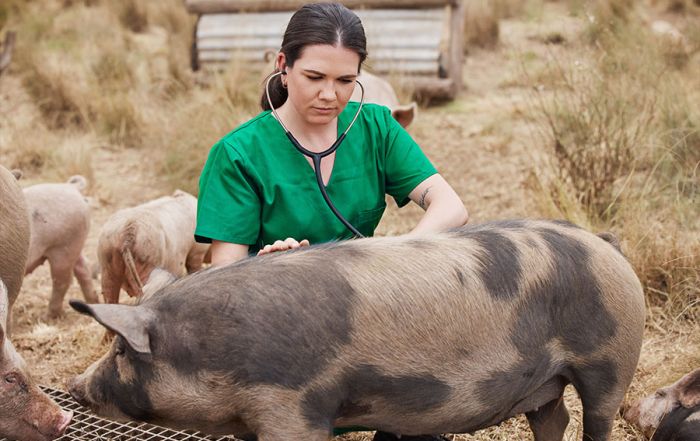When in Doubt, Throw it Out: Implications for Cost and Safety
When in doubt, throw it out is an adage that is embraced by those concerned about food safety. While it is a good approach, it can cost a lot for an operation if food is unnecessarily wasted! So, in this blog we are going to discuss strategies for eliminating, or at least reducing, the amount of food that is thrown out due to food safety concerns. Active managerial control helps control costs while making sure that food served is safe to eat. Active managerial control will help remove the doubt so that good decisions can be made about whether or not food needs to be discarded.
While there is a sense to toss food because of “an abundance of caution”, a little knowledge can save some big bucks! Here are some key strategies to follow to reduce doubt and the need to throw out food:
Check time and temperature
We always stress temperature control when we talk about food safety because not only does it help make sure food is safe to eat but it also can help reduce food waste. Keeping food within the recommended temperature ranges as it moves through the foodservice helps maintain both safety and quality of food. Do staff know what temperatures should be for specific foods? Can the following questions be answered with a Yes?
- Receiving: Is food (and milk) at the correct temperature when delivered?
- Storage: Is food stored at the appropriate temperature for type of storage?
- Cooking: Has the recommended end-point cooking temperature for type of food been met?
- Holding: Is food held at the proper temperature for no longer than specified time frame?
- Cooling: Does hot food cool as specified in the Food Code?
If Yes is not the answer, then food may need to be discarded for safety.
Document time and temperature
It is not enough to just check times and temperatures, they must be documented. Recording the time temperatures are taken and having written documentation that food was not temperature abused will guide decisions about whether to toss the food or not. The records verify temperature controls were in place, so a decision to toss is now based on quality considerations because there is no need to throw out the food due to safety concerns. BUT, if you cannot verify temperatures throughout the flow of food, the cautionary approach, and best course of action, is to toss the product—and there goes money!
Label and date prepared food
Have you ever gone into the walk-in and found a pan of food and wondered how long it had been there? Well, if you can’t verify the length of time, then out it goes. By labeling and dating food, you know exactly how long it has been stored, and that will help you make a decision on whether to keep or toss!
For commercial products, it is often confusing to interpret the dates provided. Here is an excerpt from USDA Food Safety and Inspection Service about the meaning of product labeling dates:
Best if Used By/Before dateindicates when a product will be of best flavor or quality. It is not a purchase or safety date.
Sell-By date tells the store how long to display the product for sale for inventory management. It is not a safety date.
Use-By date is the last date recommended for the use of the product while at peak quality. It is not a safety date except for when used on infant formula as described below.
Freeze-By date indicates when a product should be frozen to maintain peak quality. It is not a purchase or safety date.
Now, isn’t that confusing! While there has been an announcement by USDA with FDA to streamline these date labels, and hopefully improve understanding, that process is still in the works. So, for now, that means there is discretion. Characteristics of the ingredients and their conduciveness for bacterial growth are two considerations. Let’s talk about a few examples. Milk is a product that has been pasteurized so that all of the pathogens have been killed. There is always a “best if used by” date on the product—sometimes the milk tastes bad before that date and sometimes it tastes fine after that date. It depends on the storage temperatures throughout its life cycle (that is why the cold chain is so important). Packaging also plays a role as light can affect quality and hasten spoilage. Canned foods often have a “best if used by” date, yet most of these products can be used safely after that date, although manufacturers will warn of quality loss. On the other hand, most leftover foods should be kept only seven days (counting the day it was cooked as day 1). Again, there are exceptions depending on food, temperature fluctuations, and packaging.
Control Purchasing and Inventory
It is important to purchase the correct quantities of food so that it will be used before the quality declines. While volume purchases will save money on unit costs, if the product is not of good quality when it comes time for use and it is tossed, there really isn’t a cost savings. Plus, why tie up money inventory so far out? Finding the ideal amount to keep in stock will depend on use and location of the foodservice (some rural locations get limited deliveries, plus every delivery usually includes a drop charge). A general rule of thumb, assuming weekly delivery, is 7 to 10 days of inventory on hand. Production records (including actual use) will guide in making purchasing decisions. Once purchased products are on hand, inventory control becomes important because this is the foodservice’s money in the form of food and supplies! FIFO, or first in first out, inventory rotation is extremely important to make sure the best quality is used. FEFO, or first expired first out, is inventory rotation important for fresh cut produce items and other packaged foods.
Store Food Properly
Storage temperatures are critical to food quality and safety—and to the reduction of food waste. Keeping refrigeration units within the recommended temperature range is one key. If food is kept too warm, it spoils much more rapidly and becomes unsafe. If food is kept too cold, food may be damaged. We can all imagine that lettuce that gets too cold—and becomes limp and watery. We may even see evidence of that if ordering salads out. Not what I want to eat!
Forecast and Plan Production
Preparing what is needed, and only what is needed, relies on accurate forecasting. The completed production records help in setting the target amounts for preparation. Batch cooking or cooking to the line through use of demonstration or market delivery service approaches helps control the amount of food produced. Customers like knowing food was prepared just for them – customization of quantity production is being used quite a bit in schools and college/university dining situations. The concept of fresh is very appealing!
These strategies are important for removing any doubt that you might have about the safety of any food product. You may still throw out some food, but it won’t be because you don’t know how long it has been held and at what temperatures. You can remove doubt by following these strategies and documenting what has been done. Risk Nothing!
Never Did I Ever…
Yes, I know the real game is “never have I ever”, but that phrase didn’t work [...]
Understanding Food Contamination in Foodservice Operations
Within this blog, I’ve provided a lot of details about the finer points of food safety [...]
The Antibiotic Debate in Our Food Chain
The discovery of antibiotics in medical science is regarded as one of the most important medical [...]
Exposing the Risks of Raw Milk
When I began my career in the food safety area several years ago, I never dreamed [...]









